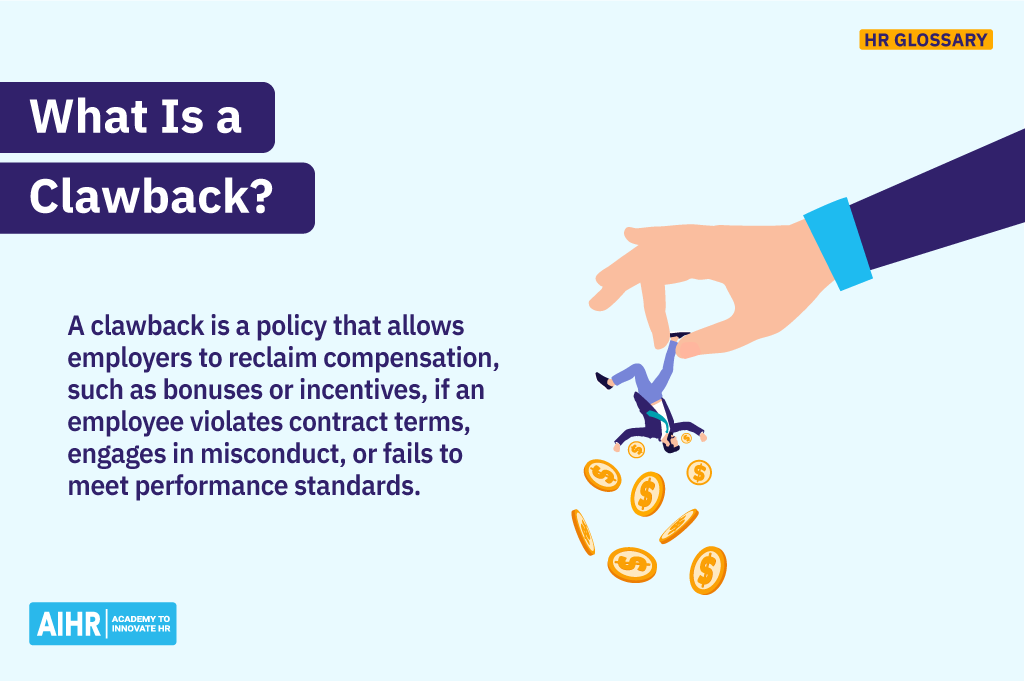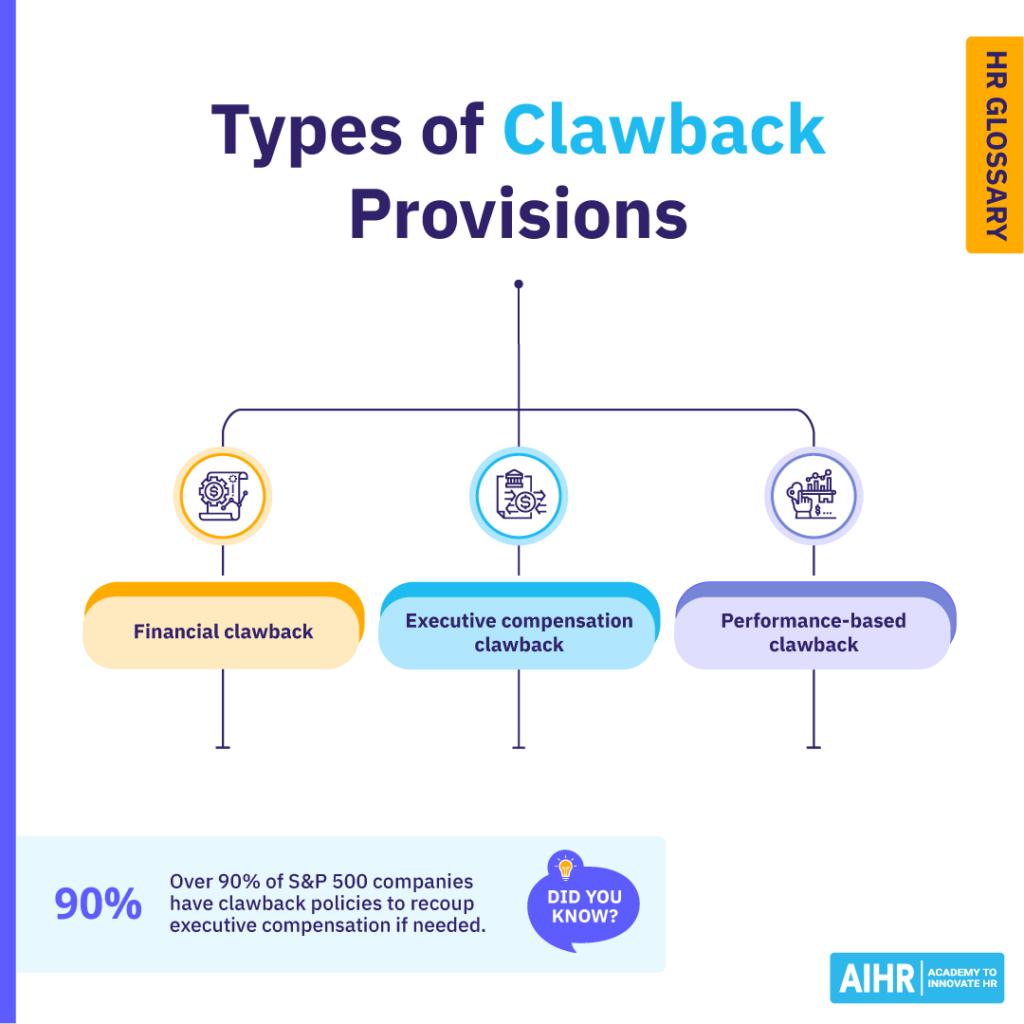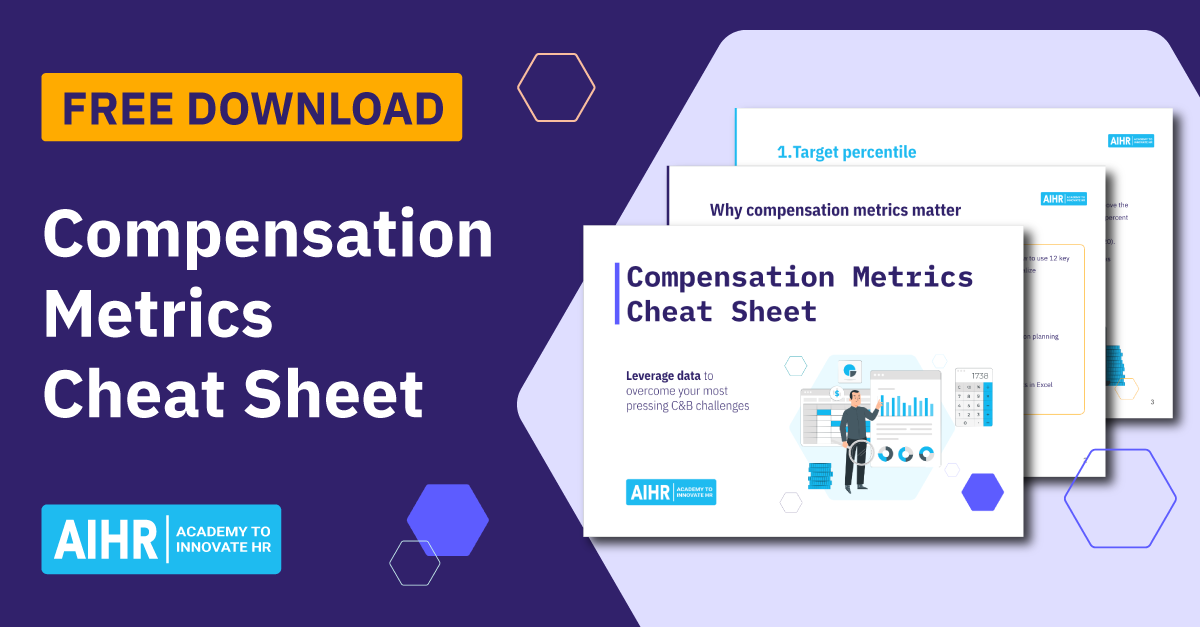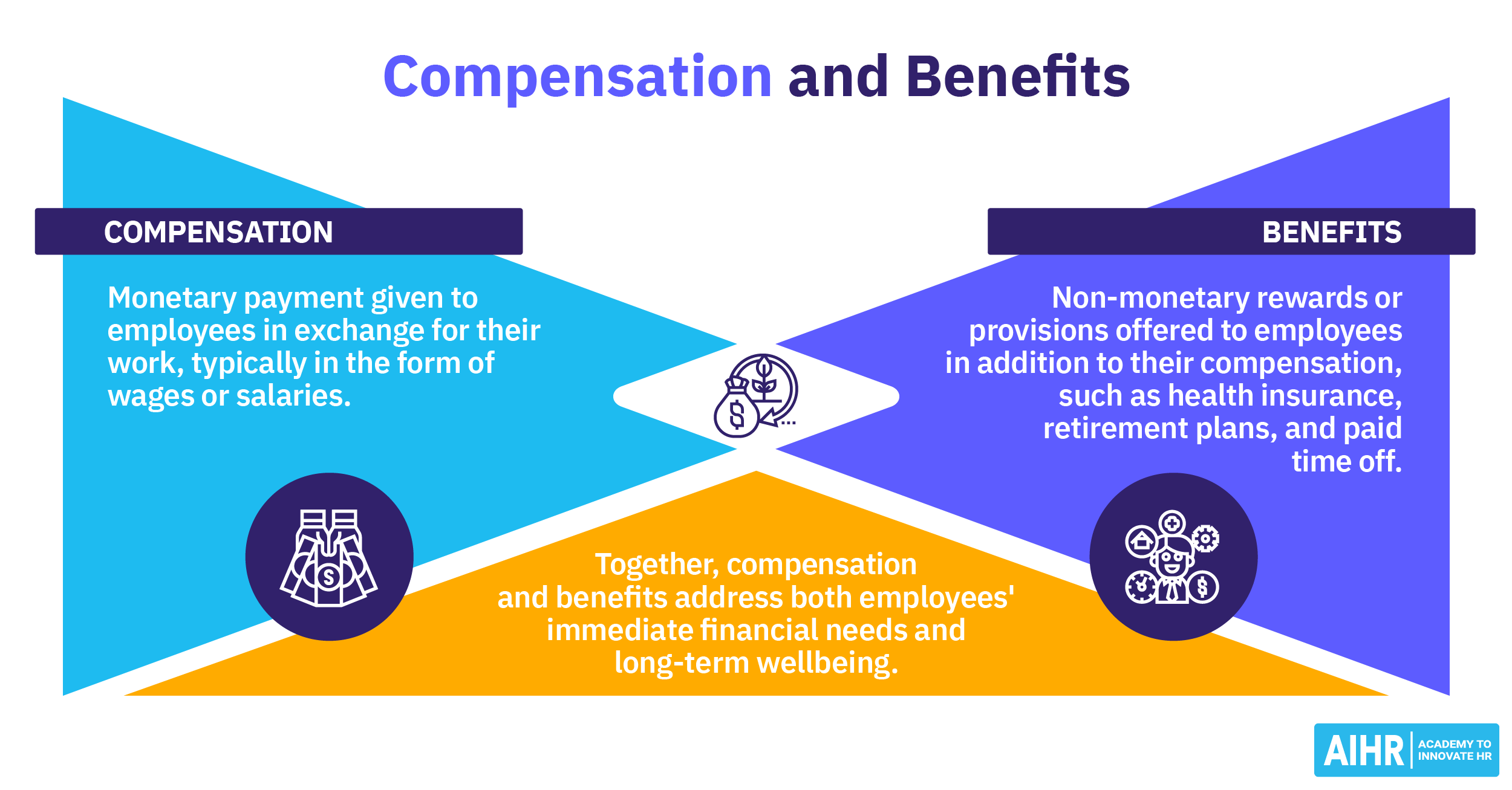Clawback
What is a clawback?
In HR and legal terms, a clawback clause allows an employer to recover money or other assets from an employee who has already received payment. It’s often used to recoup losses from fraud, financial mismanagement, or other breaches of contract. In fact, over 90% of S&P 500 companies have clawback policies to recover executive compensation when necessary, highlighting their role in corporate governance.”
Clawbacks can also be used to recover compensation in cases of breach of contract, violation of non-compete agreements, or other instances where an employee has received payment or benefits to which they were not entitled. For example, if an employee is granted a performance-based bonus but later fails to meet the required standards, the employer may reclaim the bonus—sometimes with an added penalty.

Key elements of a clawback
A clawback provision should contain the following elements:
- Purpose: As no two organizations are the same, each clawback provision should be tailored to the particular situation. It must identify the conditions that will trigger a clawback and state how much money, equity, or benefits the employer is entitled to reclaim.
- Triggering events: These are the conditions that must be met for a clawback to take effect. This could include financial mismanagement, fraud, and other unauthorized activities that result in the employer suffering a loss.
- Impact: The impact of clawback is two-fold. Firstly, it can negatively impact an employee’s financial compensation if they pay back money or assets previously rewarded. Secondly, it can deter employees from engaging in fraud or other unethical practices, as they will know there may be consequences for their actions.
- Timeframe: Some clawback clauses have expiration dates. This determines when the employer can no longer seek compensation from an employee for any losses incurred. However, it is not a universal requirement. The duration varies based on the specific circumstances and applicable laws or regulations.
While these elements are common in compensation recovery policies, the specific details and requirements vary by organization and intended purpose. Not all policies follow the same structure or include every element.
Examples of clawback provisions
Common clawback agreements include financial, executive compensation, and performance-based clawbacks:
1. Financial clawback
A financial clawback can be triggered by an employee or executive having engaged in financial mismanagement. Such situations include manipulating the books to increase profits and other forms of financial misconduct, such as misappropriation of funds, embezzlement, or insider trading. In these situations, the employer may reclaim any bonuses, commissions, or other benefits given out during the period in question.
Here’s a practical example: Imagine an employee receiving a year-end bonus for meeting their sales quota. However, the employer later discovers that the employee manipulated the company’s financial records to show they had met their goal. In this scenario, the employer would likely trigger a financial clawback to reclaim the bonus payment the employee had received.

2. Executive compensation clawback
An executive compensation clawback occurs when an executive is required to return a portion or all of their salary, bonus, or other compensation received for the year. This type of clawback is usually triggered in situations where an executive is found to have engaged in misconduct or unethical behavior, such as accounting fraud, violation of company policies, or regulatory non-compliance.
For example, a senior executive receives a large bonus after closing a colossal deal. However, at the end of the year, it’s discovered that the deal was premature or fraudulent, and the entire agreement is canceled. In this situation, the executive may be required to return some or all of their bonus due to a triggered executive compensation clawback.
3. Performance-based clawback
Organizations use a performance-based clawback policy to ensure employees remain focused on meeting or exceeding their goals. This type of clawback is triggered when an employee fails to meet set targets (e.g., sales quotas or customer satisfaction ratings), misrepresents their performance, falsifies records, or violates compliance standards.
Here’s a practical example: Suppose an employee has received a commission for closing five deals in the past quarter. However, at the end of the quarter, it was discovered that two of those deals had been canceled. As a result, the company may require the employee to return a percentage of their commission as part of a performance-based clawback.
Protect your organization with effective clawback policies
Clawback provisions help recover compensation in cases of misconduct or performance shortfalls, ensuring accountability and financial integrity.
In AIHR’s Compensation & Benefits Certificate Program, you’ll learn to design fair, legally sound clawback policies that balance risk management with employee trust.
Reasons for implementing clawback provisions
Different organizations have different motivations for adopting clawback policies. But here are some critical reasons that apply across the board:
- Mitigating financial losses: A well-structured policy is an excellent shield against financial risks. Think of it as insurance coverage; it protects the organization from any losses that may arise due to employee misconduct. It also protects against risks like underperformance, financial mismanagement, and other actions that could cause harm to the company’s bottom line.
- Ensuring accountability and ethical conduct: Clawback provisions also help maintain the organization’s integrity by ensuring employees comply with organizational rules and regulations. It reminds staff they are accountable for their actions and should not abuse their authority or privileges.
- Safeguarding company reputation: Recovering ill-gotten gains or misallocated compensation helps maintain the company’s credibility. Companies that actively enforce such policies demonstrate a commitment to fairness and corporate responsibility, which can strengthen public trust.
- Aligning executive pay with performance: These measures ensure executive compensation reflects long-term success rather than short-term gains. If bonuses or incentives were granted based on misleading financial results or errors, a clawback allows the company to correct the discrepancy.
Challenges of a clawback
Despite its benefits, implementing these policies can present several challenges:
- Legal enforceability and limitations: Retrieving compensation may require legal action, which can be complex and costly. Additionally, clawbacks are limited by the employee’s contract and any applicable laws or regulations.
- Impact on employee motivation and incentives: While these provisions can create a culture of accountability within an organization, they can also damage employee morale. Organizations risk reducing motivation and the desire to go above and beyond by requiring employees to return compensation.
- Financial recovery difficulties: Even when legally enforceable, recovering funds from employees who have already spent their compensation can be challenging. This is especially true in cases where an employee has left the organization or faced financial hardship.
- Potential for disputes and litigation: Employees may challenge the fairness or legality of a clawback, leading to disputes or legal action. Lawsuits can be costly and time-consuming, creating additional risk for the organization.
HR best practices for implementing clawback policies
Leading organizations follow best practices to ensure these policies are both effective and legally compliant. Here’s how HR can support their success:
- Develop clear and transparent policies: HR should clearly define the terms of their clawback policy, including the circumstances that trigger it and the amount of compensation that can be reclaimed.
- Balancing fairness and effectiveness: Striking the right balance between fairness and effectiveness is essential when developing clawback policies. Organizations should ensure their policy is equitable for all employees while also providing an effective deterrent from unethical behavior. To achieve this, organizations should involve HR to ensure fairness and consistency in applying the policy.
- Enforce consistently and objectively: Trust in the policy depends on uniform application across all levels, including executives. Any perception of favoritism can weaken its effectiveness and hurt morale.
- Document processes and maintaining accurate records: Keeping detailed records of compensation payouts, performance metrics, and policy enforcement actions ensures transparency and accountability. Strong documentation can also help defend against disputes or legal claims.
- Regularly review and adapt clawback provisions: HR should regularly review and adjust their policies to reflect changing regulations, market conditions, and employee expectations. By doing so, organizations can continuously improve their policy’s effectiveness while complying with applicable laws or regulations.
HR tip
To ensure fair and effective clawback policies, clearly communicate them to employees during the hiring process and at key compensation events. Transparency reduces disputes and reinforces accountability while maintaining trust within the organization.
FAQ
A clawback rule allows employers to recover previously paid compensation (e.g., bonuses or incentives) under specific conditions, such as financial restatements, misconduct, or contract violations. These rules help protect organizations from overpayments or unethical behavior.
A clawback example is a company reclaiming a CFO’s bonus after discovering profits inflated by accounting fraud. This ensures accountability for financial misstatements or misconduct.
Clawbacks can extend several years, depending on company policies, contracts, and regulations. In some cases, like SEC clawback rules, they can go back up to three years following a financial restatement.









